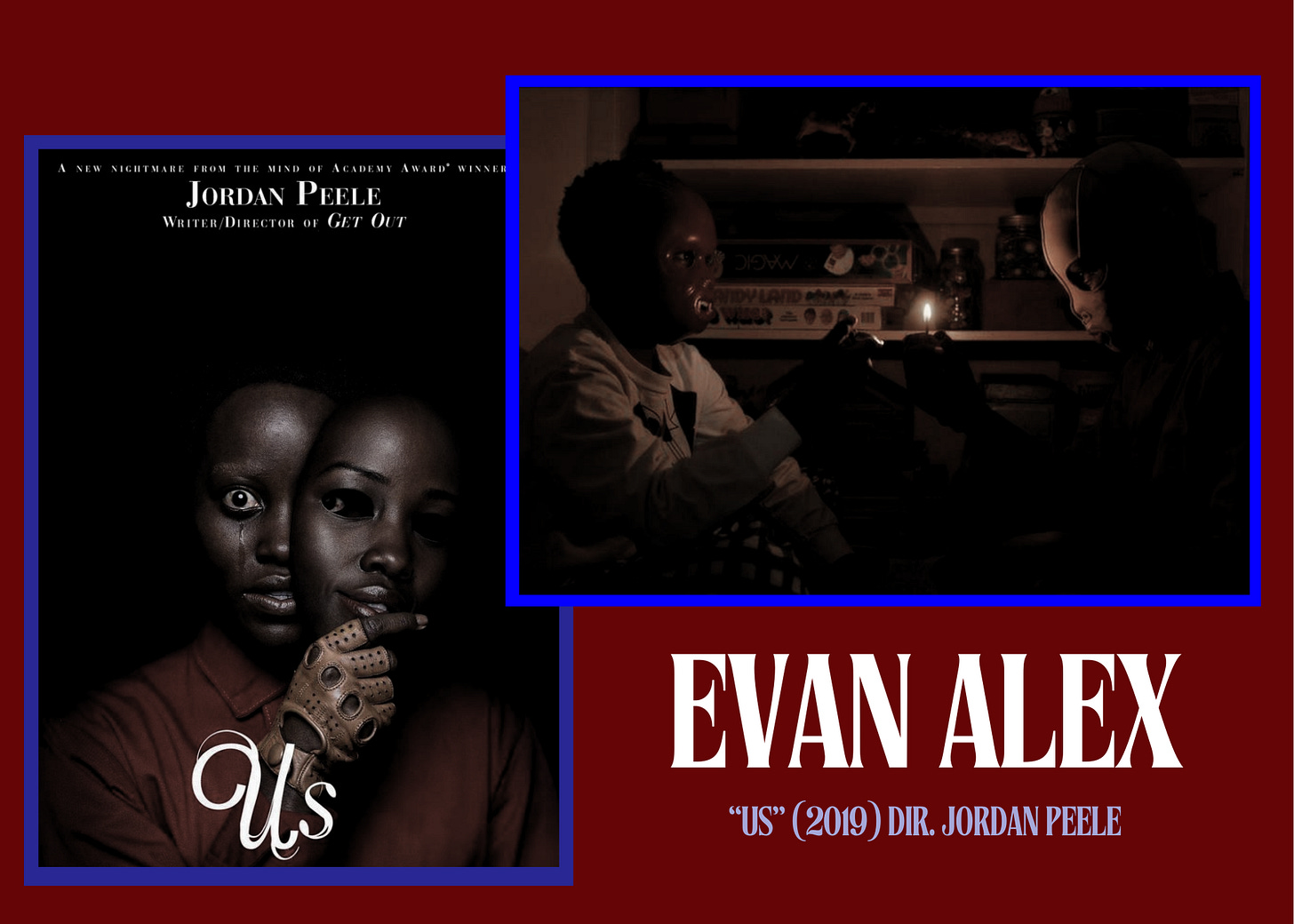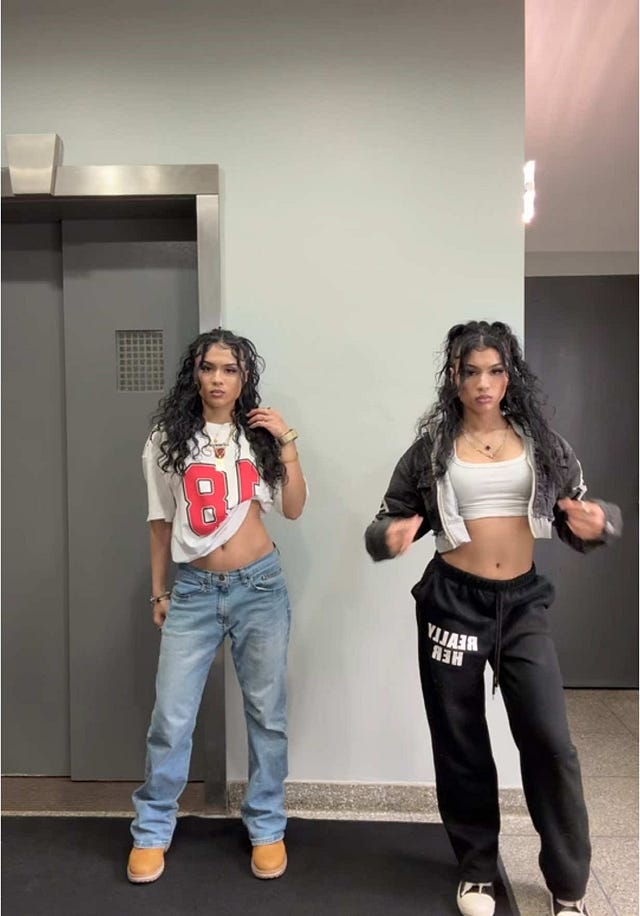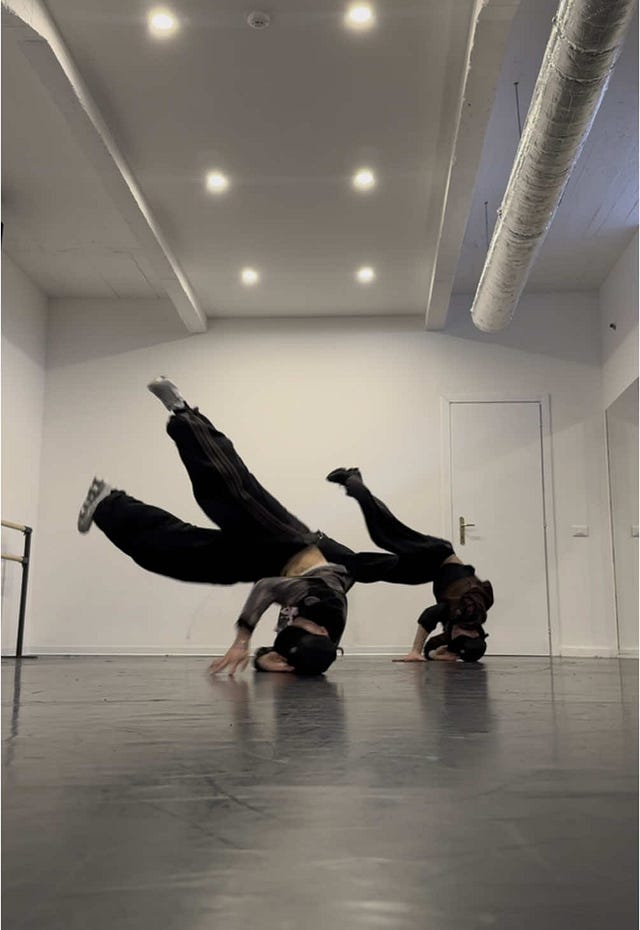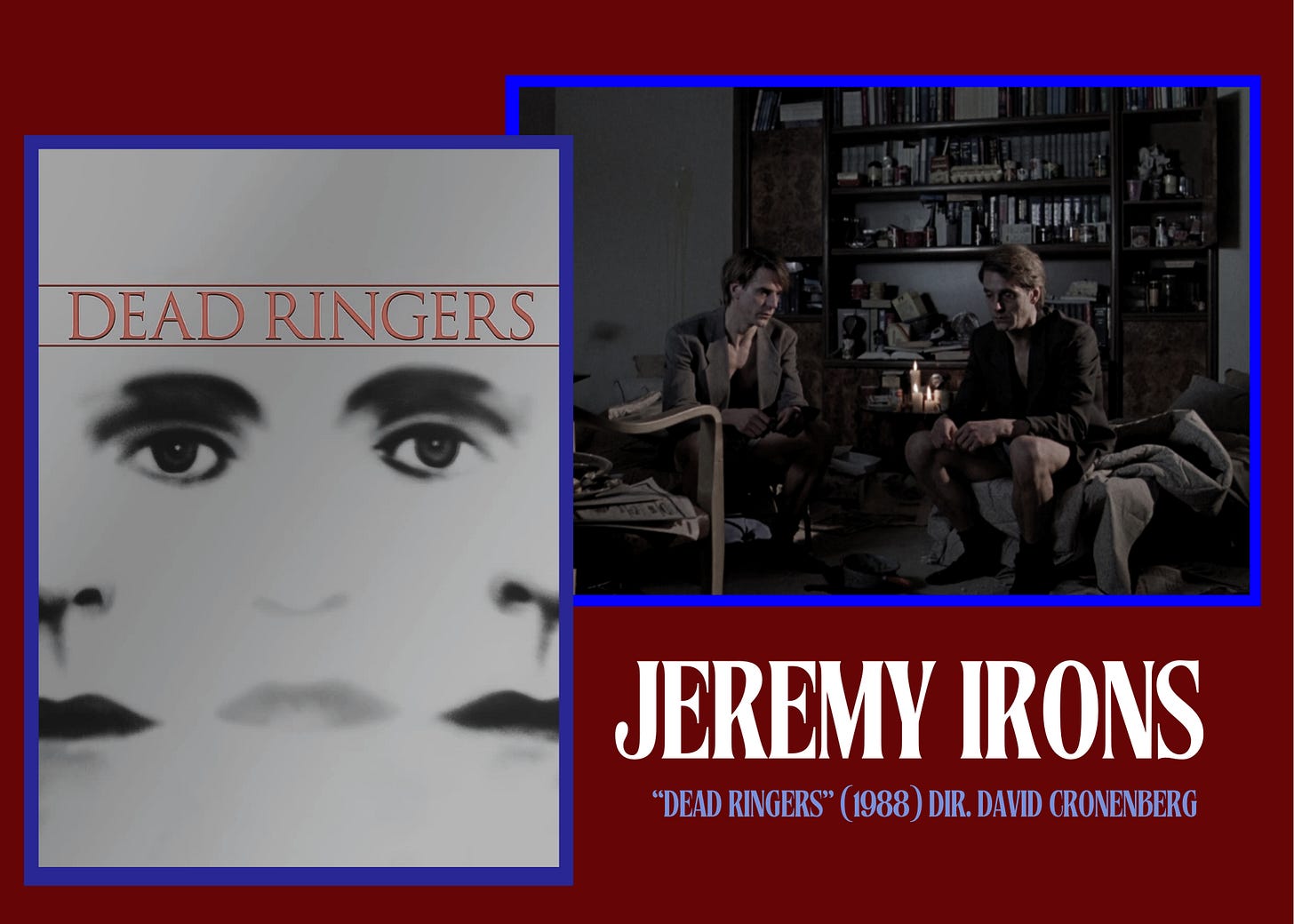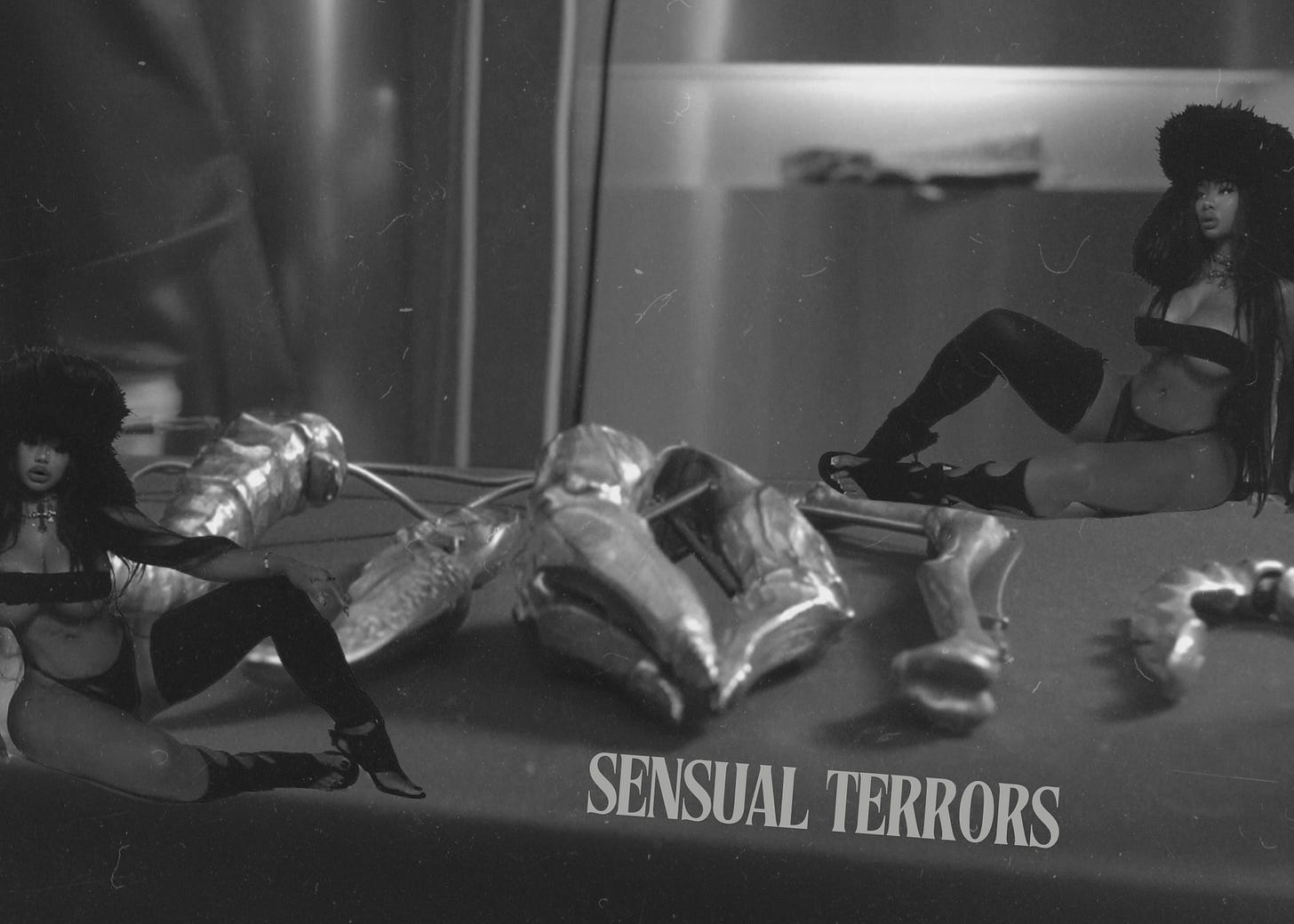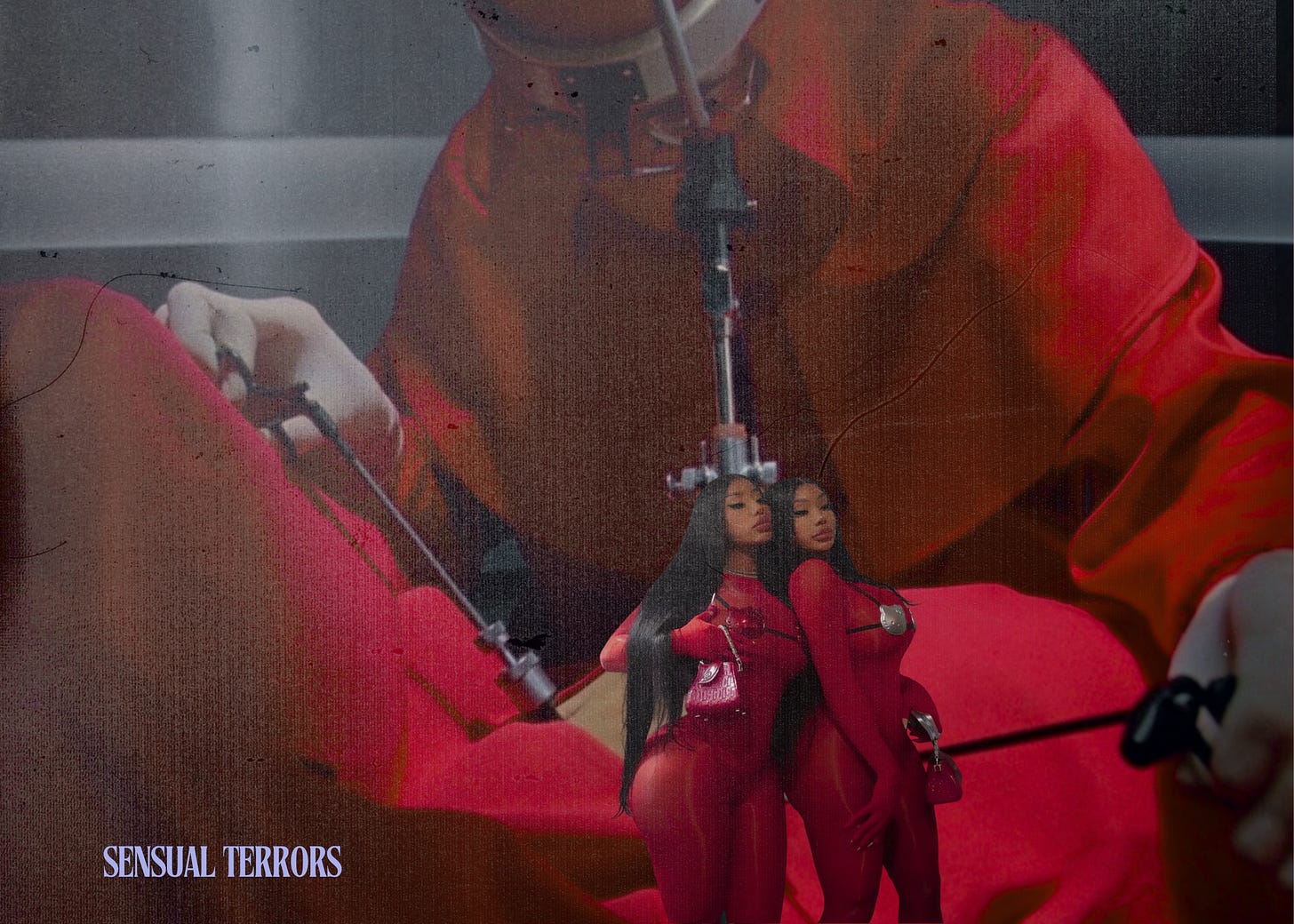Why (evil) twins freak us out
From "Us" to "The Parent Trap" to "Dead Ringers," we're obsessed with twins. Why is that?
Welcome to the weekly dispatch, SENSUAL TERRORS: musings on creativity, movie culture, and some strange bits of life.
While the “evil twin” is often written off as a lazy screenwriting conceit, twins, especially evil ones, continue to have society in a chokehold.
The most controversial and perhaps most revered film last year was about dual selves. Hi, Coralie Fargeat’s The Substance (2024). But twins and doppelgangers in film have endured.
In the horror genre, Jordan Peele’s Us (2019) has long been my no. 1 film; David Cronenberg’s Dead Ringers (1988), which I watched in a fever-filled haze a few months ago, mesmerized me.
Bong Joon-Ho’s Mickey 17 (2025) is in theaters right now still delighting audiences, and Ryan Coogler’s Sinners (2025) is the one of the most anticipated box office releases of April, if not the year.
Caught between marveling over how sexy two Jeremy Ironses are instead of one, and how sexy it would be to have two Michael B. Jordans instead of one, I came across a Letterboxd post about top dual actor performances in film.
Standouts included Lupita Nyong’o, of course — robbed for Best Actress for her performance of Us, IMHO, but rewarding Black women and acknowledging the power of horror is too much like right for the Academy.
Lindsay Lohan in Nancy Meyers’ The Parent Trap (1998) was also mentioned, because how could you not? It was my first experience with Lohan, before I went on to be obsessed with another reboot she helmed: Freaky Friday (2003). I was shocked to find out that Annie and Hallie were one person, not two.
After all, I had come of age in the Mary-Kate and Ashley™ era. Real twins on the call sheet wouldn’t be out of the ordinary.
Whether played by one person or two, the twins of my childhood had a distinct voice, personality and story arc. But they were still good. Sure, one was cheeky and one was polite, or one was punk where the other was pop.
But they didn’t do things like commit assault and murder, when their other half lived peaceably, or finesse people into bussing it wide for them, because they were the slutty twin instead of the one who liked to take it slow.
Meditating on the twins for the past week or so has brought me to a conclusion: The evil twin trope feels cheap when it’s a cop-out. But starting with twins, whether by blood or freaky horror-genre happenstance, is interesting — especially when they represent two halves of a warring whole.
Two sides of the same coin
There’s a reason why the slogan of The Substance resonates. Sure, you can have two different versions of you, but you’d best acknowledge that these different versions coexist in one body. Acknowledge this, or perish.
I think the reason why the Mantle brothers of Dead Ringers are so freaky — apart from having been children with a lifelong dream of working in obstetrics and gynecology — is because you can’t tell them apart. (And what better way to sell the premise of a movie than have them be played by the same person?)
Because with real twins, you can tell them apart.
I’ve only known one set of identical twins: Hayden and Alex. They stood out in our high school not because they were twins, but because they had deep, rich tan skin in a predominantly White student body. They also had shiny black matching bowl cuts.
They filled out their uniforms in a way that was lean and nerd-hot, not in the bulky or ostentatious way of football or wrestling jocks.
The main difference between them? One was quiet and the other one was quieter. I had spent enough time around them to notice how they held their jaw slightly differently; one had a slight underbite.
One was also slightly hotter the other, but that would be splitting hairs.
People told the apart by their shoes. One wore black and the other wore brown. Once I heard a classmate ask if they ever switched shoes — and moreover lives, for the day — to fuck with people. They said “no,” but I knew the kid asking would never know.
Prior to that, one of my middle-school best friends had been a twin. Where Jessie was tall, her sibling Jamie was short. Jessie had deep ebony hair that was wild and curly; Jamie had straight, warm brown hair with blunt cut bangs. If Jessie was the femme night sky, then Jamie was a butch sunrise. And while their faces looked entirely different, the hooked nose, warm eyes and wide smile were the same. They were undeniably twins.
Still, I was surprised to hear that people got them mixed up because they were nothing alike, from something as concrete as their physical appearance to something as nebulous as their energy signature — or even taste in music.
Regular siblings attending the same school are inextricably linked, and twins are even more so.
One name slip-up from another parent or teacher, and I’d get the (valid) bit of huffing from Jessie about an eternal human desire: To be seen, especially as an individual.
Twins: A pleasing motif of sameness
In scripted works, artists tend to use twins (Tethereds or Variants) to explore multiplicity within one’s being. In real life, each twin wants nothing more than to be seen as distinct, separate people.
But the existence of twins in media, shockingly, isn’t a binary.
“Twin” taking on new meaning in AAVE
I’ve found in music, especially rap that goes viral on TikTok, that twinning is a romanticized act of mirroring.
Building on the virality of a song like “Best Friend” (2021) by Doja Cat and Saweetie, “Twinnem” (2022) by Coi LeRay made room for people to express love and tenderness for their dearest friends, who are just like them.
There’s a sweetness in 21 Savage’s voice in “dangerous,” his Metro Boomin-produced duet with Lil Durk, when he invites Durk to join him on a driveby: “Every time thеy shit get spinned, they blamin' us / Where they hood at, twin? Let's go flame it up.”
I’ve heard even heard rappers, men and women like, nod to his and hers guns,1 along with designer get-ups from the same legacy fashion houses.
“Couple fits” are their own enduring niche
Still, I’ve noticed the matching outfit videos that elicit a desperate “ME AND WHO” comment from me most are the ones where the boyfriend and girlfriend2 aren’t sharing a boring, copy-and-paste unisex outfit situation. No, it’s the ones where the same elements of texture, proportion and color theory are distributed on each body in a complimentary fashion.
And of course, there are the twinfluencers
I just made up the phrase “twinfluencer,” so if I see you using it, I’m going to fight you!
If it’s not a word, it should be, because the twin zeitgeist is all over my FYP.
I mean, what’s better than one person killing a dance? Two people killing a dance, especially when their identical bodies are moving in sync.3
I’m only recently back on TikTok, after taking a months-long break from scrolling or posting.4 In the week since I’ve been back, twins keep popping up on my feed.
 Tiktok failed to load.
Tiktok failed to load.Enable 3rd party cookies or use another browser
 Tiktok failed to load.
Tiktok failed to load.Enable 3rd party cookies or use another browser
And where are the evil twins on social media?
But more often than not, you are your own evil twin on social media. The slickly transitioned transformations, the sun vs. moon trend, the glowup videos: These content formats were created for people to showcase their own duality.
I don’t know what Cronenberg thinks about slideshows of people as both suntanned blondes and pale, raven-haired brunettes.
But I think of his 1988 interview in SPIN, where, remarking on the interviewer’s nod to the cheap trope of the “evil twin,” Cronenberg pointed to “the metaphorical and psychological implications of twin-ness.”
It’s this schizophrenia in which one separates himself from what are basically his own responsibilities and actions, and thinks there is someone else, who is not quite himself, who is responsible. It’s like people who lead both private and professional lives, and there’s that schism—things that the private person does, the professional person would never do. That’s a little like Videodrome—in that case, it’s the celebrity persona that so many people have which isn’t really them.
The resurgence of twin-ness in 2020s culture, especially on social media, hints to me at a deep-seated human hunger: To be seen, to have one’s duality recognized.
The need: To be seen in full, parts both good and bad, flaws and all — and loved anyway.
Why evil twins freak us out
We collectively play with the idea of duality and multiplicity, but we can only take it so far before it scares us.
Especially if you’re American5, individualism is of utmost importance to modern identity-building and meaning-making.
The concept of an evil twin freaks us out because we like to think that we’re unique — and we like to think that we are good people.
Having a doppelganger who doesn’t feel the pressure of societal norms, who cuts loose and throws caution to the wind, is a mindfuck. It also shakes our foundation because in that moment — especially in a film like Us — we look into a mirror and realize that we don’t just have the potential to be evil or unoriginal. We realize, perhaps, that we are evil. We are unoriginal.
I think this is why, Lord help me, the whole schtick of the Clermont twins works.
I’ve had a lot to say body image and plastic surgery. Plus, body dysmorphia is ripe for its own horror subgenre of horror — just as
and I discussed in our first “Black Gxrls On…” installment about The Substance.In that conversation, I raised the idea of a BBL gone wrong as its own terrifying grotesquerie. That’s a recurring theme already existing in the Clermont Twins comment section.
I don’t bodyshame, so all I am willing to say on the record is that the ostentatiousness of the Clermont Twins’ matching body modifications is clearly its own form of camp.
Moreover, quite like the Mantle brothers by the end of Dead Ringers, the Clermont Twins rile and arouse their audiences by indulging in all kinds of “bad behavior.” They have dipped their toes into the evils of Instagram baddie aesthetics. They wear towering heels and skimpy outfits.
They do what many twin women have done before them, which is tease a homoerotic, incestuous relationship.
This shock tactic has titillated and disgusted everyone who comes across the Clermont Twins. I imagine the reaction is no different from those who watch Elliott Mantle swell with barely contained, voyeuristic lust as he forces his twin Beverly to divulge all the dirty details of his sex life.
There’s a mirroring in how the Mantles have captivated audiences, with their too-close-for-comfort relationship, insatiable genius and misguided drug use, and Shannon and Shanade’s appetite for vice.
But as is the case with all monsters created by Instagram and all trainwrecks directed by Cronenberg: We can’t take our eyes off of the situation at hand.
The only thing freakier than twins is an evil twin. The only thing freakier than an evil is a set of evil twins.
I hope you enjoyed this post! As I was writing about this, the cousins kiki’ng next to me brought up The Parent Trap. Then I left the café to go watch Mulholland Drive (2001), another film with dual roles. Life is nuts.
As I tried to figure out what song I had heard that mentioned this, “matching glocks for couples” came up as an autocomplete Google search. Bye! To the FBI agent reading this, I am clumsy and beyond single.
Lesbians love to be an exact match of each other beyond outfits — hair, presentation and even phenotypical features. It freaks me out. Y’all can’t be mad when cis hets ask if y’all are sisters. Sometimes, it’s a microaggression; sometimes, you’re confusing me.
Honorable mention for Les Twins, the aptly named twin dancers for Beyoncé. Based on the way they contort themselves, they deserve to be in a horror movie soon. Along with the term twinfluencer, if I see them cast in a horror movie, I will know where you got the idea and I will sue you for stealing my intellectual property.
I hope you find my posts about the Criterion Collection and Bill Skarsgard funny.
Whether you’re American or not, here’s a read about how individualism is baked into our culture in the U.S.







